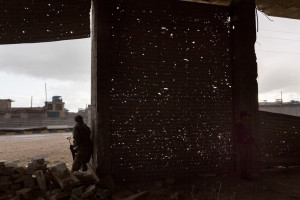The recent events in Paris, Beirut and Afghanistan have resurfaced discussion on Syrian refugees, to which I feel strongly about. I stumbled across Magnus Wennman’s work on my Facebook newsfeed, and was heartbroken at what I found. These pictures did more than appeal to emotion, however – they were informative and honest, and reminded me of similar work by Magnum artists such as Jerome Sessini – all capturing the horrible acts of terror occurring in Syria.
In 2011, the Arab Spring Activism in Tunisia and Egypt sparked protests in Syria against the Syrian government and leader, Bashar al-Assad. The government responded by kidnapping, torturing and killing protesters, as well as open firing on civilians and destroying entire towns and neighborhoods. Civilian rebel forces began combating the government violence, and the government began using chemical weapons on civilians. As a nation, we are not very familiar with what is going on in Syria – all we know is that there is a civil war and a government killing civilians. However, we do not immediately picture skeletons of cities, deserted streets filled with rubble and families squatting in crumbling buildings. When we think of the refuge crisis, it is difficult to put faces to the word ‘refuge’ – it is difficult to personalize and actually imagine the experience, it is difficult to grasp what is really going on and what families and children are really going through. This work helps. This work is the raw truth of the horrors that people are facing, the lives that people are living, the childhood that children are having. This work is extremely important to look at, especially when the majority of our country fails to even consider letting refugees into the United States.
Wennman’s work is very powerful because he documents the stories of young children who have experienced such traumatic horrors at such a young age. Wennman interviews one child named Moyad, age five. Him “and his mother needed to buy flour to make a spinach pie. Hand-in-hand they were on their way to the market. They walked past a taxi in which someone had placed a bomb. Moyad’s mother died instantly. The boy, who has been airlifted to Jordan, has shrapnel lodged in his head, back, and pelvis.” Another child, Abdullah, also age 5, “has a blood disease. For the last two days he has been sleeping outside of the central station in Belgrade. He saw the killing of his sister in their home in Daraa. He is still in shock and has nightmares every night, says his mother. Abdullah is tired and is not healthy, but his mother does not have any money to buy medicine for him.” This heartbreaking stories are not only true, but they are not uncommon for the children fleeing Syria, and the troubles they have experienced as well as the troubles they are going to experience as refugees.
Sessini’s work is quite different, and captures another aspect of the conflict in Syria. As Wennman’s work appeals more to emotion, Sessini’s is equally powerful because it appeals to logic. By capturing empty cities, bombed schools, wounded civilians and people in combat, he demonstrates the confusion, violence and destruction that has inflicted Syria for four years. It is mind-blowing to see cities that have been reduced to rubble, people living in dusty homes with their windows blown through and holes in the walls, injured civilians being transported to un-clean hospitals in dumpsters, and more. His work gives a very real perspective to what is going on – his work says, “This is happening right now. This is happening.”
This work provides amazing perspective on a conflict that does not receive enough coverage, and on a struggling people who do not receive enough support. Please look at this work!




Hey Sam,
I love this article in particular with the refugee crisis. People and politicians are so quick to come to a conclusion regarding the refugee issue without even knowing the back story and the suffering these people are going through. Some do not even know exactly who are the people are. The photographs are amazing and has a painting feel to it. They show the sorrow and terror of the people and is able to express more than words can ever express. Both the photographers are amazing and their contrasting methods just makes it so much more amusing as they portray the same thing by showing two different aspects; the empty roads and crumbling buildings, expressing the same sorrow and horror as the distressed expressions and running women. I really hope that their pictures will help people to think twice before passing comments and making conclusions regarding the refugees.